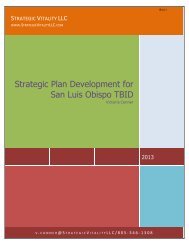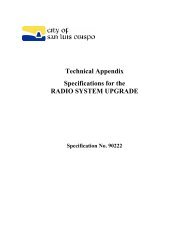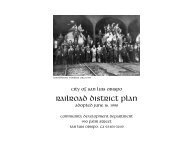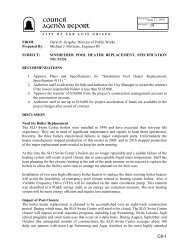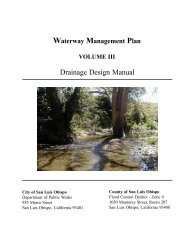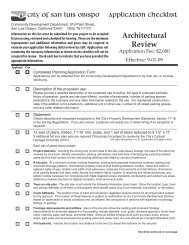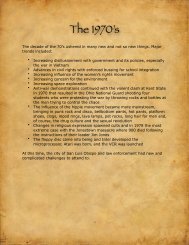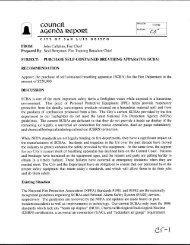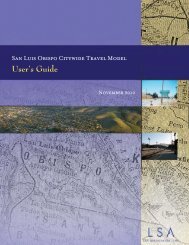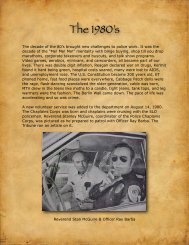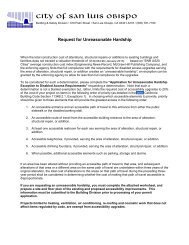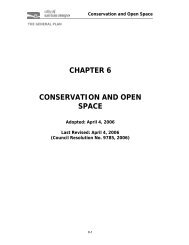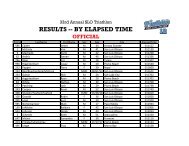Guide to Estimating Irrigation Water Needs of Landscape Plantings
Guide to Estimating Irrigation Water Needs of Landscape Plantings
Guide to Estimating Irrigation Water Needs of Landscape Plantings
Create successful ePaper yourself
Turn your PDF publications into a flip-book with our unique Google optimized e-Paper software.
Introduction<br />
<strong>Water</strong> conservation is an essential consideration in<br />
the design and management <strong>of</strong> California landscapes.<br />
Effective strategies that increase water use<br />
efficiency need <strong>to</strong> be identified and implemented.<br />
One key strategy <strong>to</strong> increase efficiency is that <strong>of</strong><br />
matching water supply <strong>to</strong> plant needs. By supplying<br />
only the amount <strong>of</strong> water needed <strong>to</strong> maintain<br />
landscape health and appearance, unnecessary applications<br />
that exceed plant needs can be avoided.<br />
To do so, however, requires some knowledge <strong>of</strong><br />
species needs.<br />
This <strong>Guide</strong> provides irrigation water needs evaluations<br />
for over 1,900 species used in California landscapes.<br />
It is based on the observations and field<br />
experience <strong>of</strong> 41 knowledgeable landscape horticulturists<br />
in California (see list <strong>of</strong> Regional Committees).<br />
It was developed <strong>to</strong> provide guidance in<br />
the selection and maintenance <strong>of</strong> plants based on<br />
irrigation water needs. Specifically, it can be used<br />
<strong>to</strong>:<br />
• assist landscape architects, designers, and planners<br />
in selecting plants for water efficient landscapes,<br />
• assist landscape managers in evaluating water<br />
needs <strong>of</strong> existing plantings and in creating irrigation<br />
schedules that match species needs,<br />
• provide options for landscape managers who wish<br />
<strong>to</strong> create hydrozones, i.e., <strong>to</strong> change species composition<br />
<strong>to</strong> reduce wide variations in water needs<br />
within plantings, and<br />
The WUCOLS guide provides water needs evaluations for over<br />
1900 species. Plants can be selected according <strong>to</strong> their water<br />
needs and grouped in<strong>to</strong> water conserving hydrozones.<br />
• provide a basis for estimating water needs for new<br />
landscapes.<br />
The project was initiated and funded by the <strong>Water</strong><br />
Use Efficiency Office <strong>of</strong> the California Department<br />
<strong>of</strong> <strong>Water</strong> Resources. Work was directed by the University<br />
<strong>of</strong> California Cooperative Extension (San<br />
Francisco and San Mateo County <strong>of</strong>fice). The first<br />
edition <strong>of</strong> the <strong>Guide</strong> was completed in 1992. A second<br />
edition was published in 1994, and this third<br />
edition was completed in 1999. In each edition, additional<br />
species evaluations have been included. The<br />
third edition was funded by the U.S. Bureau <strong>of</strong> Reclamation.<br />
49



